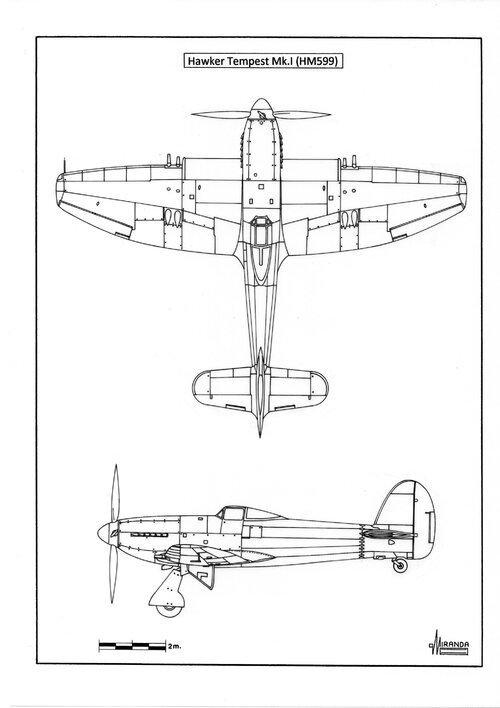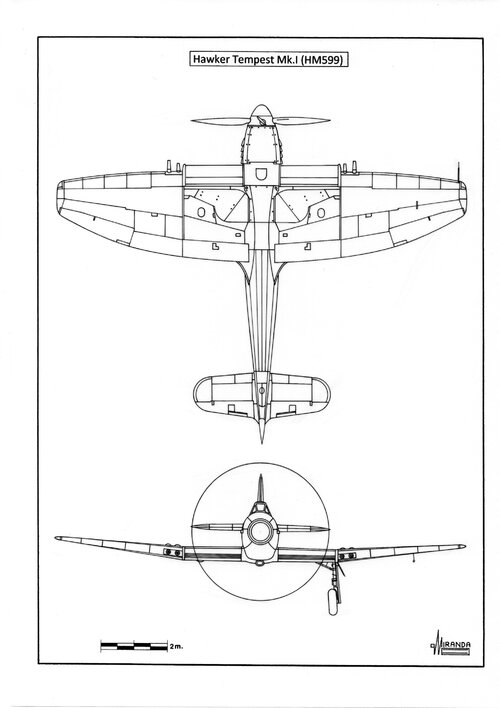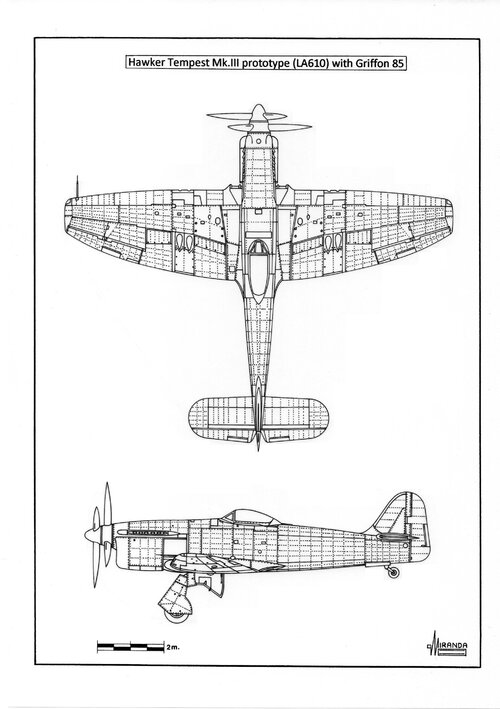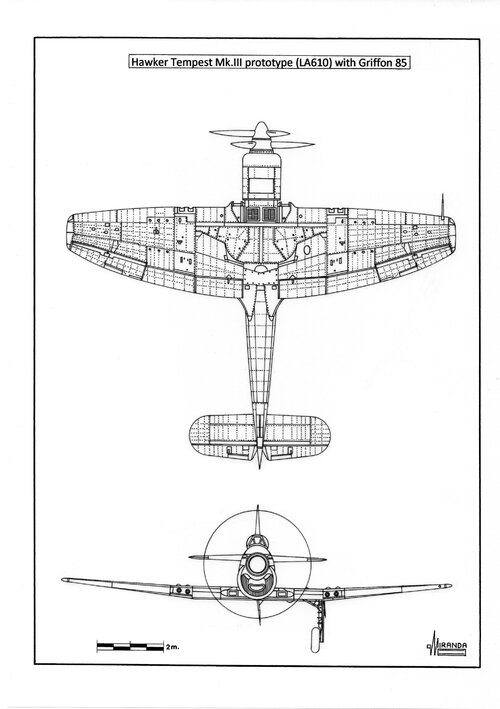- Joined
- 22 April 2012
- Messages
- 2,318
- Reaction score
- 1,838
I am trying to understand exactly what the Hawker Tempest I was and why it never went into production. After considerable reading I am left with the following understanding: The Tempest I used the Sabre IV (Napier E.107C) which was the first Napier attempt at giving the engine Hobson fuel injection, it was eventually made to work in the Sabre V used in the Tempest VI. Additionally the aircraft used Hawker's favoured wing leading edge radiators (which ultimately reappeared on the Fury Mk.I) giving it a unique look for the Typhoon/Tempest family. However, the Air Ministry didn't like the wing leading edge radiators which also suffered from manufacturing concerns and the Sabre IV suffered from development issues (apparently failing type-tests 3 times by December 1942) so the aircraft that ended up actually being built was the Tempest V with the carburettor equipped Sabre II engine and the chin mounted radiator.
What I am struggling with is the remarkable performance credited to the Tempest I; the usually given stat is 466mph at 24,500ft though BSP Fighters & Bombers states that a true air speed of 472mph was achieved (altitude not given), that makes the aircraft 30-40mph faster at that altitude than the Tempest V. According to BSP only 7-10hp of that can be accredited to the leading edge radiators.
The Sabre IV is most often quoted as giving 2,240hp which is only around what the Sabre II produced though other sources give different values, at the upper end is 2,600hp given for the E.107C though this may refer to the Sabre V rather than the IV. Is it possible that there is some misreporting of the power output of the Sabre IV or that it had a different supercharger arrangement? I assume that a relative lack of operational equipment would have helped the Tempest I but 30mph still seems like a substantial difference...?
What I am struggling with is the remarkable performance credited to the Tempest I; the usually given stat is 466mph at 24,500ft though BSP Fighters & Bombers states that a true air speed of 472mph was achieved (altitude not given), that makes the aircraft 30-40mph faster at that altitude than the Tempest V. According to BSP only 7-10hp of that can be accredited to the leading edge radiators.
The Sabre IV is most often quoted as giving 2,240hp which is only around what the Sabre II produced though other sources give different values, at the upper end is 2,600hp given for the E.107C though this may refer to the Sabre V rather than the IV. Is it possible that there is some misreporting of the power output of the Sabre IV or that it had a different supercharger arrangement? I assume that a relative lack of operational equipment would have helped the Tempest I but 30mph still seems like a substantial difference...?
Last edited by a moderator:




